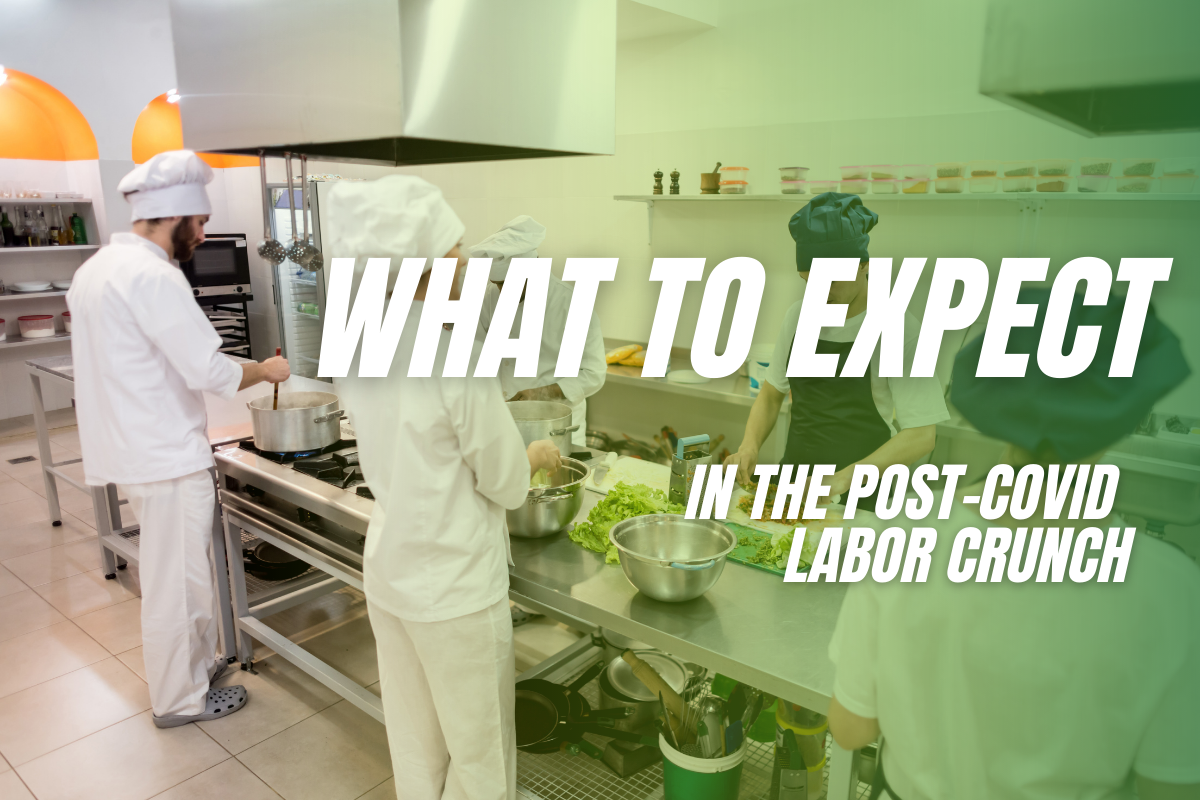
After laying off a huge number of staff members, the foodservice industry is now struggling to find and hire labor.
In some ways, the shortage in staffing has created a sense of panic in regard to how the foodservice industry and restaurants will move forward. For smaller businesses, it can be difficult to compete with larger chains that are now offering monetary incentives to entice workers. The industry will move forward just like it’s always done, and here are a few important factors.
WHY ARE WE FACING A LABOR SHORTAGE?
At the start of the pandemic, many cities mandated lockdowns that shut businesses down completely or dwindled services to curbside pick up and delivery. This had serious impacts on the workforce, with millions of workers being either laid off or furloughed during the heart of the pandemic.
For those who remained, there was certainly the added concern of COVID exposure, in addition to the higher demands foodservice jobs brought over the last year. With so many worried about getting sick and potentially spreading the virus to loved ones, that mentality has continued to some degree up until the present day. Tack on the presence of poor working conditions in some situations, government assistance, and numerous other factors, and the result is an industry now facing a labor crisis. Simply put, the causes cannot be simply put. It’s a complex situation with many facets.
In April of this year, the Bureau of Labor Statistics reported that 266,000 jobs had been added throughout the economy. While many people have concerns about what to do as businesses re-open, the numbers show that the majority of industries are not experiencing a shortage in labor. It’s mostly targeted towards the leisure, hospitality, and foodservice sectors.
WHAT CAN WE DO TO ENCOURAGE HUNTING WORKERS TO APPLY?
Due to the shortage of staff, many foodservice operations are unable to fully open back up and some have even begun to cut back hours to try and offset the frustration. Many employers are having trouble getting people to show up for actual interviews, and when smaller businesses are unable to offer monetary incentives, updating SOP’s and providing transparency can help.
People are looking for safe conditions that provide them with reassurance in the workplace. This means being fully open about what you’re doing to protect employees. Adding in additional cleaning and updating kitchen or in-house equipment with hand sanitizer stations and more have been key turn solutions to encouraging many workers to ease their way back in.
RELIABLE EQUIPMENT TO HELP EASE THE STRAIN
The labor shortage isn’t only impacting the operational process for restaurants. It’s leaving the few workers on shift exhausted from overtime and lack of help. Fortunately, digital solutions and technology are making waves in easing the pressure from staff and providing a sense of functionality. Mobile ordering and apps that allow consumers to place orders directly from their table are allowing employees to focus more on cleaning and serving rather than constantly seating or checking on guests. This has offered phenomenal assistance in allowing workers to do their jobs without becoming overworked.
Other options include portable serving carts or pick-up cabinets to assist in providing options for hungry consumers, effectively changing the points of service. This equipment ensures that multiple orders can be taken care of at once, and it provides security to the customers that placed the orders. With the help of durable and reliable equipment, many foodservice operations are gaining some structure again.
